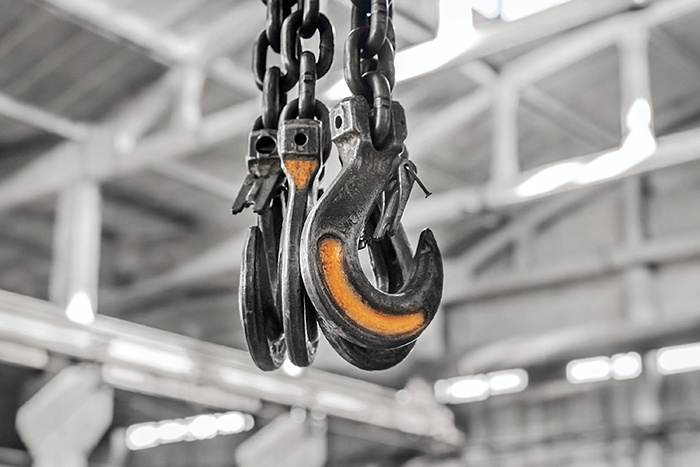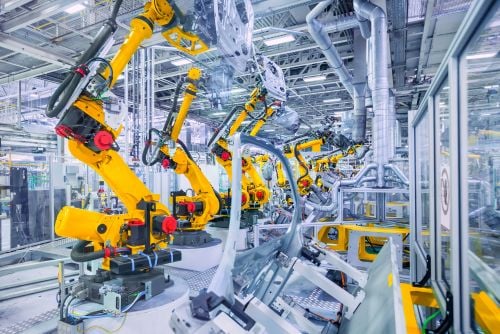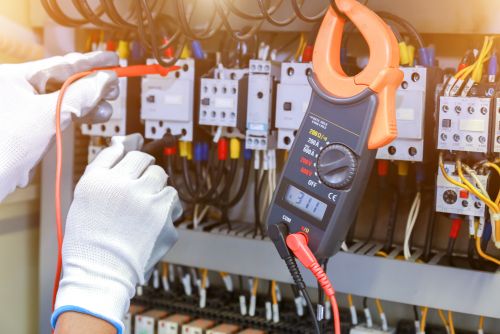Understanding LOLER Regulations for Equipment Relocations
Engineers with the task of moving high-technology manufacturing equipment from A to B must ensure that lifting is meticulously planned and carried...
We're actively recruiting for a range of roles across sales, engineering, IT and warehouse. Check our careers page to see open positions including apprenticeships.

Whether you’re moving a single piece of equipment or an entire production line, our trusted team of engineers can support every step of your move, from rigging to end-to-end relocation support across the globe.

5 min read
Admin Aug 21, 2024 7:30:00 AM
If your business owns, operates or controls work equipment, you must comply with the Provision and Use of Work Equipment Regulations 1998 (frequently referred to as simply “PUWER”).
PUWER is a legal obligation designed to ensure and maintain worker safety when using equipment in the workplace.
In this guide, we’ll explore PUWER in more detail, including which equipment it covers and how you can comply with it.
As an employer, you have a responsibility under PUWER to ensure all workplace equipment is safe, suitable and properly maintained. That includes equipment that you provide for your workers, or personal equipment that full-time or self-employed employees bring into the workplace.
PUWER requires that all work equipment is:
The definition of “work equipment” is wide-ranging, and applies to all types of new, existing and second-hand machinery, appliances, apparatus, tools or installations provided for use in the workplace. According to HSE’s Approved Code of Practice and guidance, this includes:
Ship-related work equipment is generally excluded from PUWER regulations, as it will instead fall under merchant shipping legislation.
PUWER applies to equipment provided for use in any workplace or work situation that’s covered by the Health and Safety at Work etc Act 1974 (often referred to as the “HSW Act”), and places responsibilities on employers, self-employed people and people who use or have control over work equipment.
The word “use” here covers a wide range of work activities, including starting, stopping, programming, setting, transporting, repairing, modifying, maintaining, servicing and cleaning, as described in HSE’s Approved Code of Practice and guidance.
As an employer, you’re legally required to ensure all work equipment provided in the workplace is safe, suitable and properly maintained. Here are four key responsibilities:

As an employer, it’s your responsibility to ensure that all work equipment provided is fully suitable (either by design, construction or adaptation) for its intended purpose.
This means that when selecting work equipment, you’ll need to consider the nature of its intended tasks, the work environment and any specific hazards that may arise during use. For example, equipment used in an environment that’s exposed to hazardous substances, high pressures or extreme temperatures must be able to function safely within those conditions.
You should also ensure that equipment is used in strict accordance with the original equipment manufacturer’s specifications and instructions. That’s because deviating from these can compromise safety and may lead to equipment failure.

Under PUWER, you have an obligation to carry out regular maintenance to ensure it remains in safe working condition and prevent it from deteriorating to the point where it could pose a risk to health and safety.
This might include regular servicing, such as lubricating moving parts, replacing worn components, and cleaning, alongside performing safety-related maintenance tasks, including checking and replacing worn or damaged friction linings.
The frequency at which you perform maintenance tasks will depend on:

As well as regular maintenance sessions, you’ll need to carry out inspections when equipment is first installed, when it’s moved and when it’s relocated. You’ll also need to carry out inspections at regular intervals for equipment that’s exposed to conditions that can cause deterioration.
The purpose of inspections is to ensure equipment is functioning safely and correctly and all safety features (such as interlocks, protection devices, and controls) are working, as well as to catch any potential safety risks before they can turn into accidents.
Finally, inspections under PUWER should be carried out by individuals who are competent and have the necessary expertise to perform the task effectively. While routine inspections can often be handled by trained in-house staff, more complex or specialised inspections might require external specialist expertise.

As the employer, you’re legally required under PUWER to ensure all work equipment is used and operated safely. But what does that entail?
Firstly, only individuals who have received proper training should be allowed to operate work equipment. You must not only enforce this, but also supply training on how to use equipment correctly and safely, as well as any risks associated with operation and how to mitigate them.
Secondly, you’ll need to appoint adequate supervision in cases where operators are less experienced or where equipment poses a higher safety risk. This is to ensure safety procedures are followed and operators are using equipment as trained.
And thirdly, you must provide all workers using, supervising or managing the use of work equipment with clear and adequate health and safety information. This includes written instructions on the equipment’s use, safety guidelines, equipment markings and warnings, and any specific procedures that need to be followed.

Risk assessments are a legal requirement under PUWER. They help you to identify potential hazards associated with the use of the work equipment and its environment, and put in place measures and controls to mitigate them.
Here are the key steps to conducting a PUWER risk assessment:
Finally, it’s important to note that risk assessment and control is not a one-time activity. It’s an ongoing process that you should regularly review and update.

Under PUWER, you’re required to implement a range of safety measures to protect workers against potential hazards at work. These safety measures are essential to prevent accidents and injuries in the workplace and to ensure compliance with the law.
This involves equipping all work equipment with appropriate safety devices, including:
The features and measures you choose to implement should be based on thorough risk assessments and the environment in which they are used.
In addition to PUWER, some work equipment is subject to additional health and safety regulations. For example:
It’s also worth noting that most new work equipment that’s classed as machinery also falls under the Supply of Machinery (Safety) Regulations 2008, which requires that machinery supplied to the GB market complies with strict safety standards and has the UKCA mark. Learn more about the Supply of Machinery (Safety) Regulations here.
Since 1991, we’ve been helping manufacturers and importers in the semiconductor, pharmaceutical, and other high-technology industries comply with the requirements PUWER.
Our turnkey PUWER assessment service covers the whole process, from testing equipment against regulations to providing test reports and remedial solutions in the event of non-compliance.
Discover our PUWER assessment service via our service page here.
Stay up to date with the latest news and resources from our experts.

Engineers with the task of moving high-technology manufacturing equipment from A to B must ensure that lifting is meticulously planned and carried...

The Machinery Directive 2006/42/EC is a set of EU health and safety requirements that apply to new and modified machinery used in the workplace. ...

The Low Voltage Directive 2014/35/EU, also known as the LVD, is a set of product safety requirements that apply to electrical equipment in the...